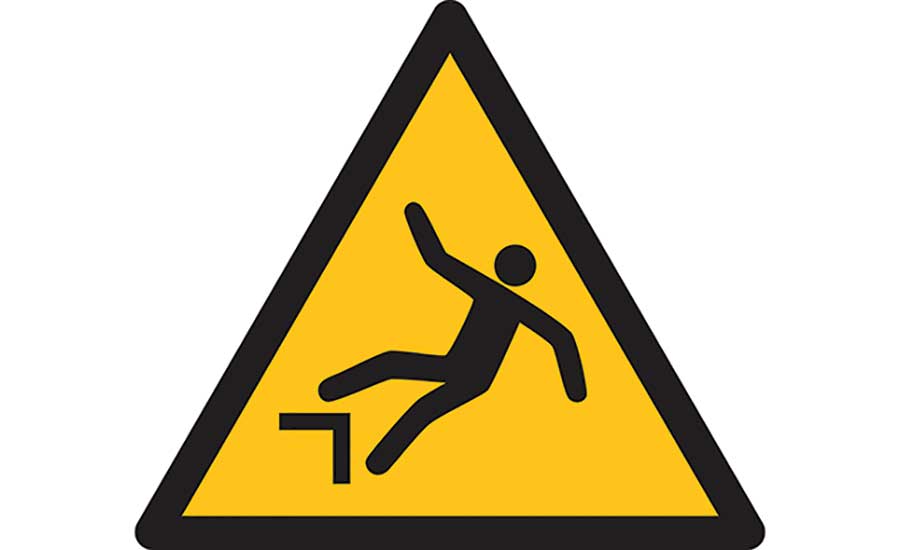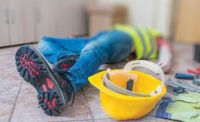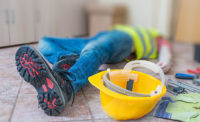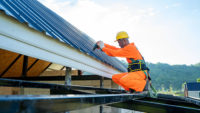History
The Secretary of Labor adopted Construction Standards, which had been issued under the Construction Safety Act in 29 CFR Part 1518, as OSHA standards in accordance with section 6(a) of the OSH Act (36 FR 10466, May 29, 1971). The Safety and Health Regulations for Construction were redesignated as Part 1926 later in 1971 (36 FR 25232, December 30, 1971).
OSHA adopted several regulations related to fall protection under section 6(a) of the OSH Act. On November 25, 1986, OSHA proposed to revise virtually all of the fall protection provisions of the construction industry standards and to consolidate those requirements, except where specifically provided otherwise, in subpart M [51 FR 42718]. On August 5, 1992, OSHA reopened the rulemaking record (57 FR 34656) to consider new information submitted by the Precast/Prestressed Concrete Institute (PCI) regarding the fall protection needs of employees engaged in precast concrete construction. On March 29, 1993, the agency again reopened the rulemaking record (58 FR 16515) to provide additional time for the precast concrete construction industry to comment on the issues raised in the August 5, 1992, notice. The final rule, 29 CFR Part 1926, Subpart M, which became effective on February 6, 1995, contains general fall protection requirements for construction work. Additional fall protection requirements can be found throughout Part 1926.
Why this standard is important
Historically, falls are the leading cause of fatalities in construction, accounting for about one-third of all fatalities in the industry. For example, the Bureau of Labor Statistics reported that there were 291 fatal falls to a lower level in construction in 2013, out of 828 total fatalities. OSHA recognizes that incidents involving falls are generally complex events, frequently involving a variety of factors. Consequently, the standard for fall protection deals with both the human and equipment-related issues in protecting workers from fall hazards. Compliance assistance materials are intended to help workers and employers better understand the Fall Protection in Construction standard’s requirements and the reasons behind them.
Hazards
Construction workers often work near and above dangerous equipment, for example, working over machinery with open drive belts, pulleys or gears or open vats of degreasing agents or acid. They are also in danger of falling objects, falls from tripping or falling through holes.
Enforcement Statistics
October 2015 through September 2016 – totals for all industries
Citations: 6,404
Inspections: 6,139
Penalty: $24,500,590
#1 on OSHA’s Top 10 Most Frequently Cited Standards
Most Frequently Cited Provisions
- Each employee who is constructing a leading edge 6 feet (1.8 m) or more above lower levels shall be protected from falling by guardrail systems, safety net systems, or personal fall arrest systems. Exception: When the employer can demonstrate that it is infeasible or creates a greater hazard to use these systems, the employer shall develop and implement a fall protection plan which meets the requirements of paragraph (k) of 1926.502.
- Each employee on ramps, runways, and other walkways shall be protected from falling 6 feet (1.8 m) or more to lower levels by guardrail systems.
- Each employee on a walking/working surface shall be protected from tripping in or stepping into or through holes (including skylights) by covers.
Most cited industries
- Specialty Trade Contractors
- Construction of Buildings
- Merchant Wholesalers, Durable Goods
- Heavy and Civil Engineering Construction
- Administrative and Support Services
- Fabricated Metal Product Manufacturing
- Real Estate
- Utilities
- Waste Management and Remediation Services
- Miscellaneous Manufacturing
What must employers do to protect employees?
Employers must assess the workplace to determine if walking or working surfaces have the necessary strength and structural integrity to safely support the workers. Once it is determined that the work surfaces will safely support the work activity, the employer must determine whether fall protection is required (using the requirements set forth in 29 CFR 1926.501) and, if so, select and provide workers with fall protection systems that comply with the criteria found in 29 CFR 1926.502.
Generally, fall protection can be provided through the use of guardrail systems, safety net systems, or personal fall arrest systems. OSHA refers to these systems as conventional fall protection. Other systems and methods of fall protection may be used when performing certain activities. For example, when working on formwork, a positioning device system could be used. OSHA encourages employers to select systems that prevent falls of any kind, such as guardrails designed to keep workers from falling over the edge of a building.
Fall Protection Standard Compliance Directive
Directive Number: STD 03-11-002
Subject: Compliance Guidance for Residential Construction
Effective Date: June 16, 2011
Key Letters of Interpretation
• 29 CFR 1926.501(b)(10) provides multiple options for fall protection on low-slope roofs. Guardrail systems, safety net systems, personal fall arrest systems, or a combination of warning line system and guardrail system, warning line system and safety net system, or warning line system and personal fall arrest system, or warning line system and safety monitoring system may be used on low-slope roofs. In addition, on roofs 50 feet or less in width, employers may use only a safety monitoring system. Employers do not have to prove that any options are infeasible in order to use other options.
• 29 CFR 1926.501(b)(4), Subpart M — Fall Protection, provides:
§1926.501(b)(4) Holes. (i) Each employee on walking/working surfaces shall be protected from falling through holes (including skylights) more than 6 feet (1.8 m) above lower levels, by personal fall arrest systems, covers, or guardrail systems erected around such holes. [Emphasis added.] (ii) Each employee on a walking/working surface shall be protected from tripping in or stepping into or through holes (including skylights) by covers. [Emphasis added.]
An employer has a duty to protect employees from the hazard of a hole in walking/ working surfaces as specified in §1926.501(b)(4). Case law has established that brevity of exposure to a hazard is not a defense to a failure to protect against the hazard. Where the duty under §1926.501(b)(4) applies, it must be complied with immediately.
Significant Enforcement Cases
Paterson, N.J. – On Jan. 16, 2014, Paterson-based F&G Sons Contractors Inc., doing business as F&G Stucco and Stone Contractors Inc., was cited by the U.S. Department of Labor's Occupational Safety and Health Administration for two repeat and two serious safety violations for failing to provide required protective equipment and to protect workers from serious fall hazards. The company was working on a building at 231 Union Blvd. in Totowa at the time of the inspection. This investigation was part of OSHA's Local Emphasis Program on fall hazards in construction. Proposed penalties total $66,400.
Auburn, Ala. – Based in Auburn, Gonzalez Stucco & Stone LLC was cited by the U.S. Department of Labor's Occupational Safety and Health Administration for four repeat and one serious safety violation following an inspection at a residential construction site at 283 Bentley Court. The agency initiated the June 2014 inspection as part of its National Emphasis Program on Falls. Proposed penalties total $54,120. The repeat citations, with $52,360 in penalties, were issued for exposing workers to falls ranging from 18 to 26 feet. The employer failed to plank scaffolds fully, ensure guardrails were installed on open sides and provide adequate access to scaffolding. The employer neglected to provide fall protection devices for workers preparing to lay brick around a chimney.
Compliance Assistance
OSHA’s Fall Protection in Construction booklet offers details on the standard, frequently cited hazards and information on training.
Safety and Health Regulations for Construction document provides detailed information on each part of the standard.
Protecting Workers from Falls safety and health topic. OSHA has a web page dedicated to fall protection topics.



